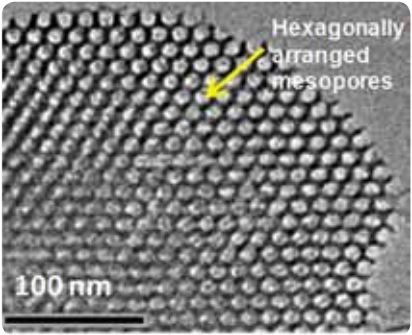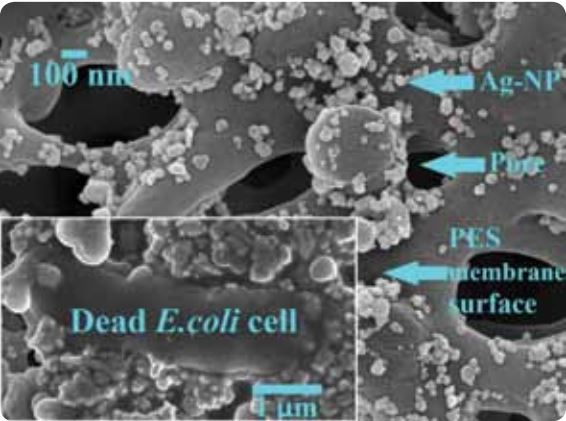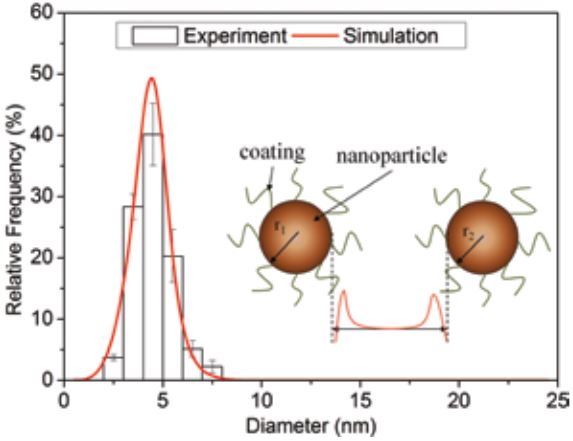Swati Bhattacharya
-
swaticb@che.iitb.ac.in

Education
Courses
Research
Porous hybrid nanomaterials for catalysis and drug delivery
We have made various porous nanomaterials, with precise geometrical features and chemical functionalities, each having a unimodal pore diameter in the range of 2.5-12 nm. These are a high surface area host, within which a second nanoparticle, drug or enzyme has been impregnated to generate hybrid materials with high reactivity. For example, TiO2 nanoparticle loaded SBA-15 has been developed to photo catalytically degrade water-soluble dyes at a very high rate. In contrast, drug loaded SBA-15 has been shown to kill cancer-cells in a pH and receptor specific targeted manner.

Silver nanoparticle incorporated packed beds and membranes for water disinfection
Household drinking water purification systems using activated carbon (AC) as the filtration medium suffer from bio fouling, which can be eliminated by using the biocidal effect of silver (Ag). Employing an innovative plasma- treatment method, we have achieved superior impregnation of Ag nanoparticle (Ag-NP) in AC (Ag-AC). This hybrid achieved complete water-disinfection in a continuous column- operation, combining high kill-rate of E. coli coupled with a low rate of Ag release. Extending further, a lab-scale cross-flow membrane module has been designed to demonstrate anti-biofouling activity of Ag-NP impregnated sulphonated polyethersulfone (SPES) membrane. Currently, we are pursuing impregnation of other nanoparticles in AC, to achieve removal of other contaminants from water.

Modeling and simulation of complete nanoparticle size-distribution
A major challenge in nanoparticle research is to specify experimental conditions for manufacturing nearly-monodisperse nanoparticle samples. We have shown that by using a model consisting of nucleation, diffusion-growth and coagulation-growth, one can a-priori predict, without any fitting parameter, the complete particle size distribution (PSD) of both uncoated and coated primary nanoparticles. This has been possible by using an interparticle potential function based Monte Carlo simulation, which accurately captures the physics of coagulation. This can be a general framework to predict PSD of all types of nanostructures of any material.

Research Areas
Sub Areas
- Molecular Simulations
